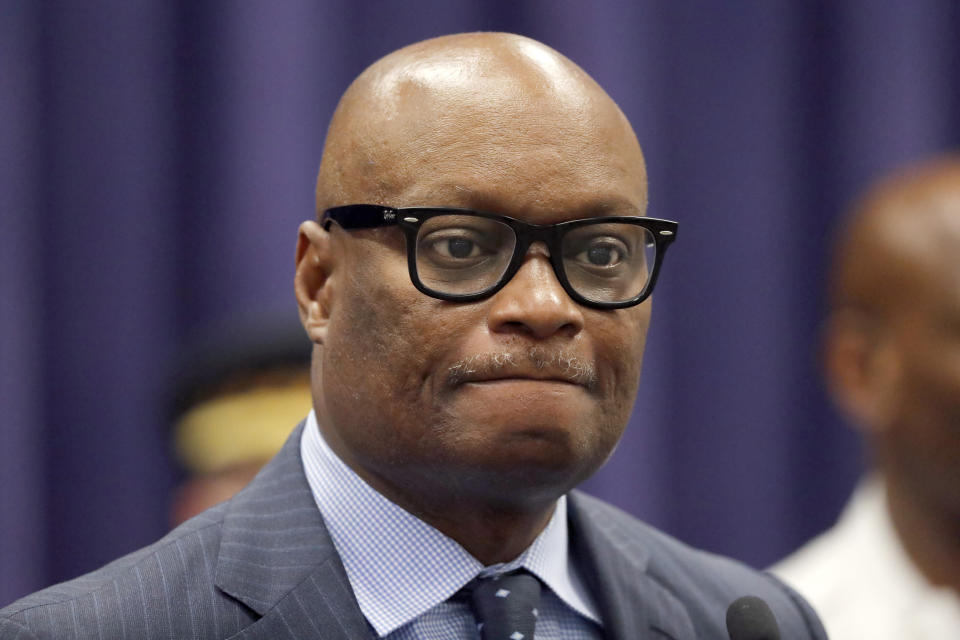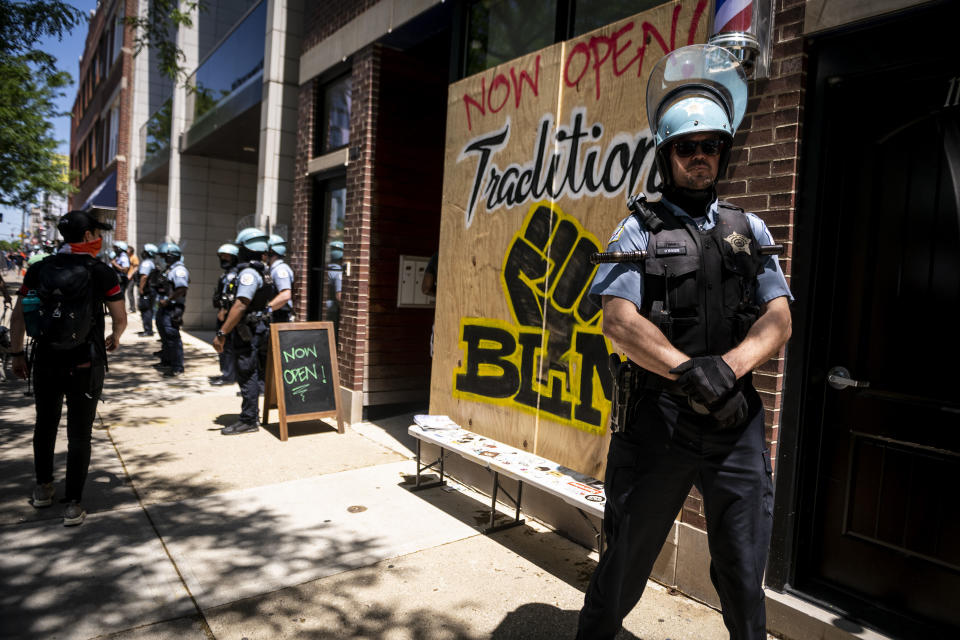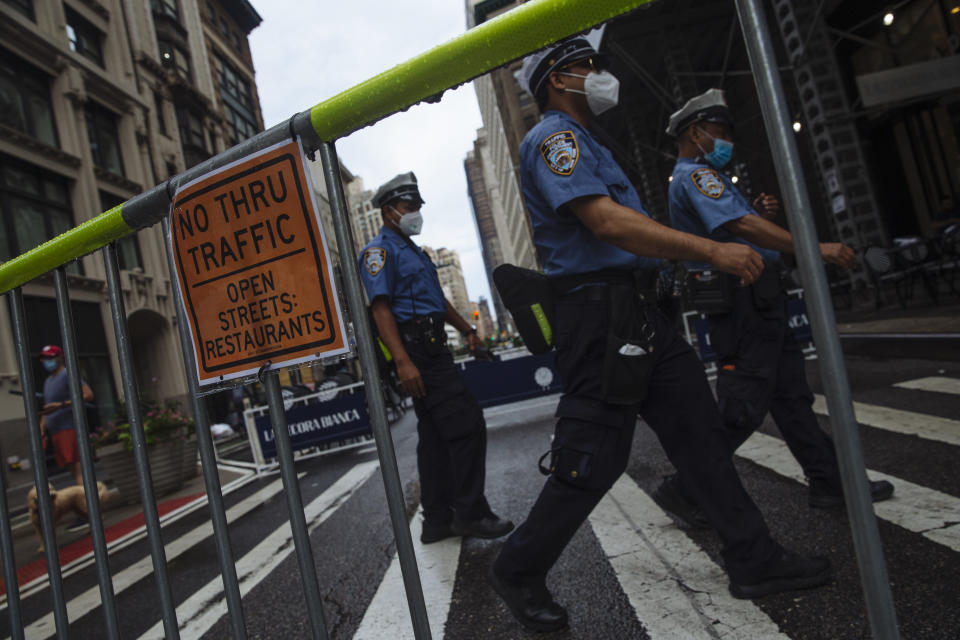As COVID-19 lockdowns ease in some cities, violent crime returns to the streets
A surge of gun violence is plaguing several major cities in the U.S., adding to the woes of a nation grappling with the coronavirus pandemic and civil unrest sparked by the police killing of George Floyd.
Data provided by police departments in New York City and Chicago shows upticks in shootings and homicide victims in June leading into July, compared with this time last year. Philadelphia police reported a double-digit increase in homicide victims as of July 8, compared with the same point in 2019.
City and police officials across the country began the week by addressing the violence. “We cannot allow this to be normalized,” Chicago Police Superintendent David Brown told reporters Monday, lamenting a spate of shootings over the Fourth of July weekend that included the killing of a 7-year-old girl.
The violence has become political fodder for the Trump administration. White House press secretary Kayleigh McEnany chided reporters at a press conference Monday for not asking about the recent violence. President Trump suggested in a tweet that New York City and Chicago are havens for criminals.
Cities have seen spikes in crime many times in the past, and violent crime in many cities, including New York, has been declining for decades. But experts who spoke to Yahoo News tied the surge to the country’s myriad challenges: the stress of the COVID-19 pandemic, economic uncertainty and increasingly strained relations between police and communities that were already weakened by decades of distrust.
Stay-at-home orders to control the pandemic confined people inside for much of April and May. And while there is evidence this held down crime in some cities, Rand Corp. researcher John Hollywood told Yahoo News that the lockdown caused psychological stress to build up.

“Historically, during major blizzards or heat waves, crime goes down,” Hollywood said. Equating COVID-19 to a “very large storm,” he added that when conditions become less severe and people stuck inside go out, there tends to be an uptick of violence.
And crime also rises, historically, when police-community relations are strained, he added.
“We saw something similar in Chicago at the end of 2015 into 2016,” he said. “After the release of the Laquan McDonald shooting video, you can see significant spikes in violence that appear to be attributable to a kind of breakdown” in relationships between police and the community.
That breakdown can also contribute to low clearance rates (the number of crimes where charges are laid compared with the number of crimes reported), said Meagan Cahill, also a researcher at Rand. That in turn can bolster the perception, especially in communities of color, that police are uninterested or not invested in solving crimes.
“That’s been happening on an everyday basis,” Cahill said, “before the coronavirus and the protests. Then you throw that stuff in too.”

The Chicago Police Department recorded 84 murders between June 1 and June 28, an 83 percent increase from 46 that time last year. There were 404 shootings in the city, up from 206.
Chicago has had 1,782 shooting victims and 353 murders so far this year, according to data provided by a police spokesperson Monday.
The spike in June came after a period of relative stability in crime rates, Wesley Skogan, a criminology expert at the Institute for Policy Research at Northwestern University, told Yahoo News.
“Before the shutdown and Floyd events, 2020 looked just like 2019 in almost every category,” Skogan said. The shutdown slowed down crime but not gun violence, he said. “Then the [Floyd aftermath] sparked gun crime. So not only did it not stay low, it jumped way up.”
When asked about solutions Monday, Brown told reporters that a “complex, sustained approach” of street outreach, violence intervention and community investment will combat crime.
“While that will help in the long term,” the superintendent said, “none of that will bring back these young lives that were mercilessly cut short. Nor will it provide any immediate relief for the families mourning and grieving the loss of their loved ones. What they want and deserve is justice.”
In New York City, police officials pointed to bail reform and a “round of deep budget cuts” as obstacles to effective policing, according to a news release from the department issued Monday.
Members of the City Council last week agreed on a budget for the next fiscal year that removes $1 billion from the department’s spending. The move is an effort to “not only limit the size and scope of the NYPD, but also reimagine how we structure criminal justice and public safety in this city,” the Council said.
The NYPD reported a 130 percent increase in the number of shootings across the city in June 2020 compared with the same month in 2019 — 205 compared with 89. The number of murders increased to 39 from 30, a 30 percent increase.
The surge is alarming, Eugene O’Donnell, a professor at John Jay College of Criminal Justice, told Yahoo News. But it comes as the city’s overall crime rate has trended downward since the 1990s.

“Overall, the numbers in New York have been low,” O’Donnell said. “So while it’s statistically a dramatic increase, and I’m very worried about it, it’s important to say that New York has been on the low end of crime for a long time.”
O’Donnell, a former NYPD officer, also bemoaned what he described as the politicization of public safety, which he says has been harmful to NYPD officers. At a news conference Monday, NYPD Chief of Department Terence Monahan seemed to take aim at anti-police sentiment.
“You take a look at what happened this weekend, the amount of shootings just [this] last week; 74 incidents, 101 victims,” he said, “101 people who took a bullet, 18 who were killed. Imagine if there weren’t cops out there.”
NYPD officials announced on Monday a renewed focus on community-based policing efforts, redeploying officers out of the department’s anticrime units, local outlet NBC New York reported.
Cahill told Yahoo News that police in cities like New York still aren’t doing enough to gain back the trust lost from minority communities after decades of police abuses.
“The problem is there has been a lot of lip service given to community policing and community relations,” she said. “I think the pain that these communities experienced needs to be acknowledged. It needs to be a first step. Not the only step, but the first step.”
_____
Read more from Yahoo News:


